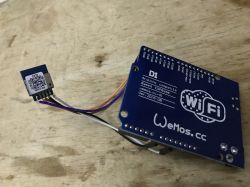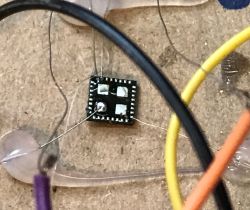FAQ
TL;DR: For recurring phase dropouts, choose an automatic phase switch that "switches phases when the voltage drops below 195 V". It provides switchover that contactors alone cannot guarantee. [Elektroda, bumble, post #18290377]
Why it matters: Homeowners and installers facing frequent single‑phase faults need safe, automatic continuity without cross‑phase shorting.
Quick Facts
- Automatic phase switches (e.g., PF‑431) change over when voltage falls below about 195 V. [Elektroda, bumble, post #18290377]
- Typical retail units are rated around 16 A; higher loads require adding contactors. [Elektroda, lucjanobes, post #18290139]
- Contactor coils have pull‑in/dropout hysteresis, so brownouts can hold them energized. [Elektroda, retrofood, post #18296190]
- A faulted phase can sit near half voltage; some contactors won’t drop at ~0.5 Un. [Elektroda, czesiu, post #18293557]
- Use auxiliary contacts to interlock contactors and prevent two phases at once. [Elektroda, Janusz_kk, post #18290492]
What is an automatic phase switch and when should I use one?
An automatic phase switch monitors three phases and selects the one with acceptable voltage. One user cites 195 V as a switching threshold for an F&F unit. Use it where a recurring loss of one phase leaves rooms dark. “There is nothing more to look for.” [Elektroda, bumble, post #18290377]
Are contactors alone a safe, cheap alternative for 16 A+ loads?
Yes, but only with proper interlocking. Use auxiliary contacts so two phases can never connect simultaneously. Without interlocking, you risk a cross‑phase short. That design choice satisfies the core safety requirement for contactor‑based switching. [Elektroda, Janusz_kk, post #18290492]
Why is simple contactor switching unreliable during brownouts?
Contactor and relay coils have hysteresis. They pull in at higher voltage and drop at lower voltage. When a phase sags, voltage distribution changes. The coil on the failed phase may not release, blocking transfer. “That’s why I advise against such games.” [Elektroda, retrofood, post #18296190]
Why might a “lost” phase still show voltage and hold a contactor?
After a network fault, the “sick” phase can sit near half of the supply voltage. Many contactors will not drop at approximately 0.5 Un. A contactor‑only solution can therefore hang and never change phases as intended. [Elektroda, czesiu, post #18293557]
Can devices like F&F PF‑431 switch without a break?
One poster notes the F&F unit uses three relays and does not provide no‑break transfer. Live phase‑to‑phase switching is unhealthy anyway. Expect a brief break during changeover, which protects equipment and safety. [Elektroda, mawerix123, post #18291295]
Should I just stay on the most reliable phase instead of auto switch?
If outages always hit the same phase, move permanently to the stable phase. This avoids repeated transfer events and complexity. It is a pragmatic choice for chronic, one‑phase problems. [Elektroda, bumble, post #18290377]
What dropout and return voltages should I define?
You must define both the cut‑off and the return thresholds for selection logic. “You have to define the cut‑off voltage and the return voltage.” This avoids chatter and unsafe oscillations during sags. [Elektroda, CYRUS2, post #18290904]
Which contactor brands are recommended for reliability?
Buy from an electrical wholesaler and pick reputable brands. A suggested choice was Schneider for dependable residential duty. Avoid unverified listings that overstate ratings. [Elektroda, bumble, post #18293387]
Are ultra‑cheap 20 zł contactors safe for house feeders?
Treat very cheap devices skeptically. A unit labeled 16 A might actually behave like 1.6 A quality. Do not risk long‑term house supply on questionable components. Use proper contactors if you must. [Elektroda, bumble, post #18292226]
What failure modes can occur if interlocking is miswired?
If one contactor cuts Neutral feeding the others’ coils, the remaining coils can energize via interphase paths. That can create dangerous cross‑coupling and unintended operation. Review coil and auxiliary wiring carefully to prevent this edge case. [Elektroda, elezibi, post #18295487]
Do household devices actually run at very low fault voltages?
One user reported 180 V falling to 14 V over three days on a faulted phase. A radio, a laptop charger, a modem, and a struggling fridge still ran. Expect unusual behavior, not safety or reliability. [Elektroda, lucjanobes, post #18294901]
Do contactors take more space and increase risk versus an integrated switch?
Multiple contactors consume more DIN‑rail space and add more points of failure. Each device introduces another potential fault. An integrated automatic switch simplifies wiring and reduces risk. [Elektroda, bumble, post #18292226]
Is there a sample contactor scheme someone shared?
Yes. One poster shared a three‑contactor interlock proposal and linked an Iskra 25 A contactor, around 63 zł. Use as a starting point, not a final design. [Elektroda, Janusz_kk, post #18291475]
How do I interlock three contactors for safe phase switching?
Use auxiliary contacts to enforce exclusivity.
- Equip each contactor with NC auxiliary contacts in the others’ coil circuits.
- Wire each coil through the other two NC auxiliaries, preventing concurrent energization.
- Verify only one contactor can energize at any time before connecting loads. [Elektroda, Janusz_kk, post #18290492]






